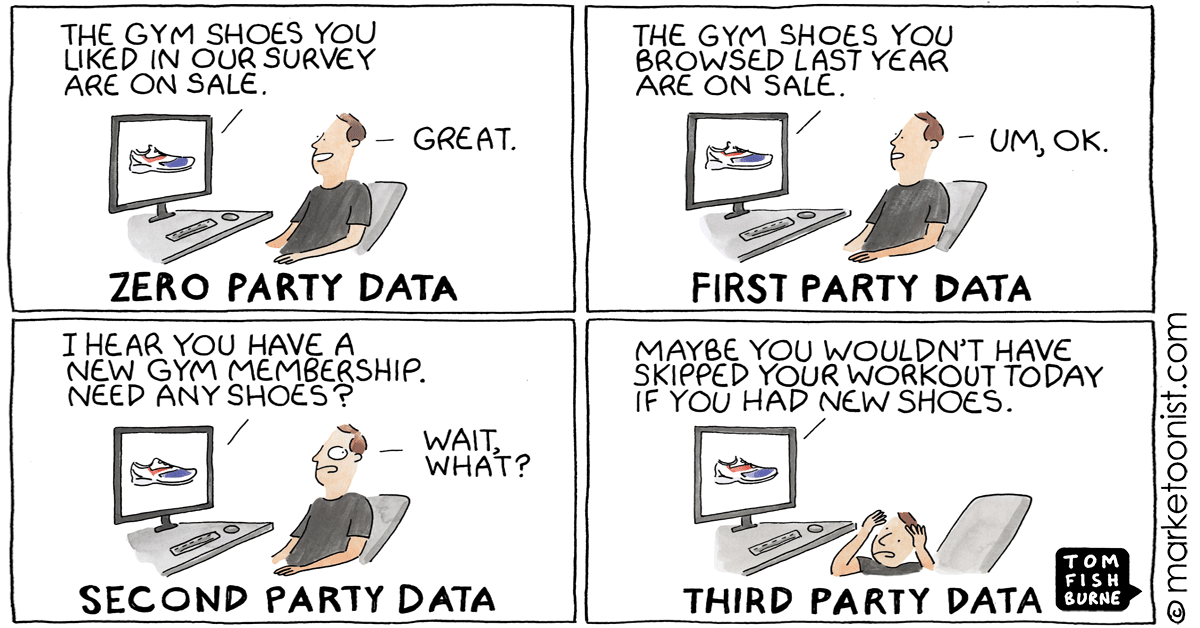It’s Time to Change the Way You Leverage Different Party Data
As marketing and media move closer to a world without third party cookies, we’re all being forced to reevaluate the ways in which we’re building and executing against our audience data. But while the methods may be changing, the goal remains the same: To ensure we continue to reach the right people with the right message in the right place at the right time.
Despite the constant evolution of digital technology, first-party, second-party and third-party data still present viable, valuable opportunities for smart advertisers. But the specific strategies and tactics employed to reach consumers all depend on which party they’re “attending.”
Data Types
First-Party Data
- Data collected directly from users through your channel
- Trustworthy
- No privacy concerns
Second-Party Data
- Data acquired from someone else’s first-party data
- Complements your own data
- Involves privacy concerns
Third-Party Data
- Data purchased and collected from various sources
- Large volume
- Significant privacy conerns
Leveraging the Power of First-Party Data
Building Second-Party Relationships

Refining Contextual Targeting
While the popularity of contextual advertising certainly waned during the era of the third-party cookie, we’re starting to see a resurgence in its application amongst brands and advertisers. Steady advancements in technology and methodologies have helped to breathe new life into what was once considered an outdated way of serving ads.
In fact, a recent market report by Global Industry Analysts forecasts the global contextual market will reach over $335 billion by the year 2026.
Far from simple keyword matching, new AI algorithms now allow for the scanning of hundreds of parameters and attributes on pages to determine not only topical relevance, but also brand safety, emotional tone, and even objects on display within embedded pictures.
So, when an advertiser knows and really understands the type of person they’re trying to reach, modern contextual advertising can be a significant boon for upper funnel brand awareness.
Remaining Open to New Ideas
The advertising landscape is still very much in flux, and innovative ideas are being presented every day; ideas about how we can better leverage data – of all types – to build audiences without having to rely on third-party cookies.
The most successful brands and advertisers of the future will be those who are not only able to spot new technologies, but willing to take advantage of new methodologies to better target and serve their consumers.


